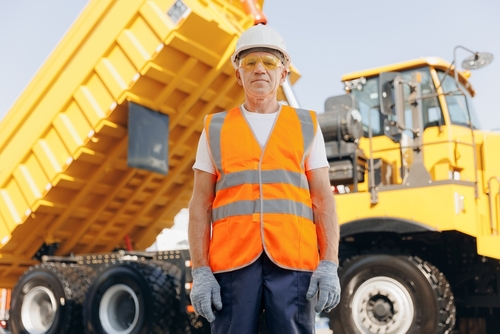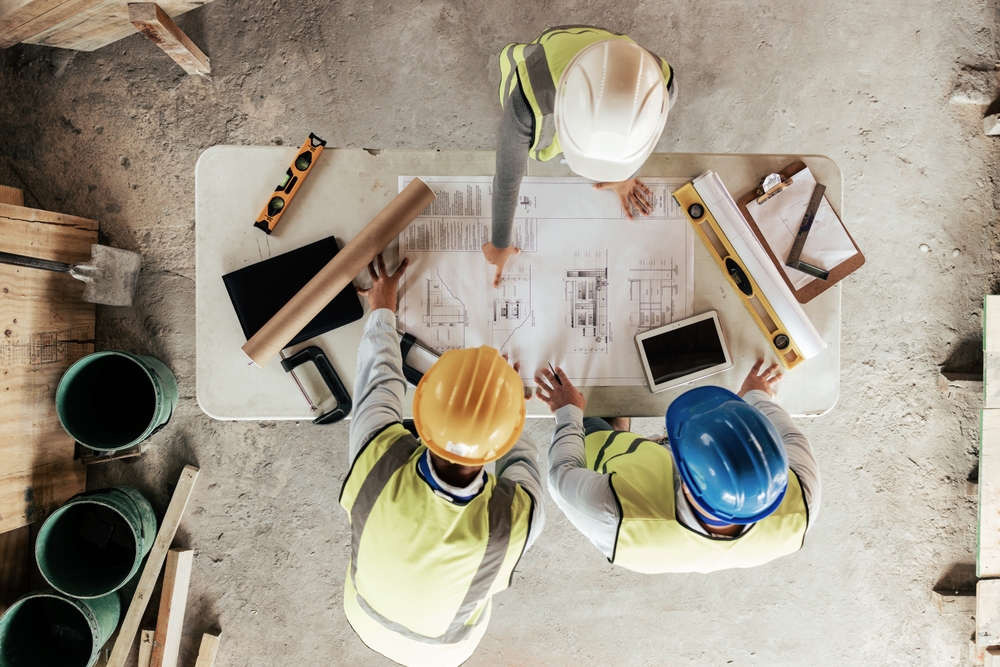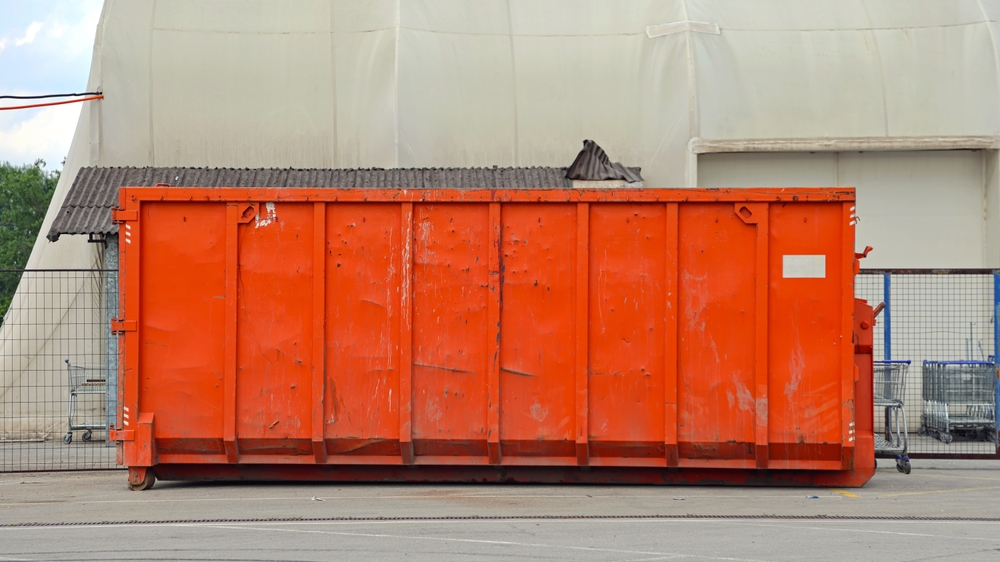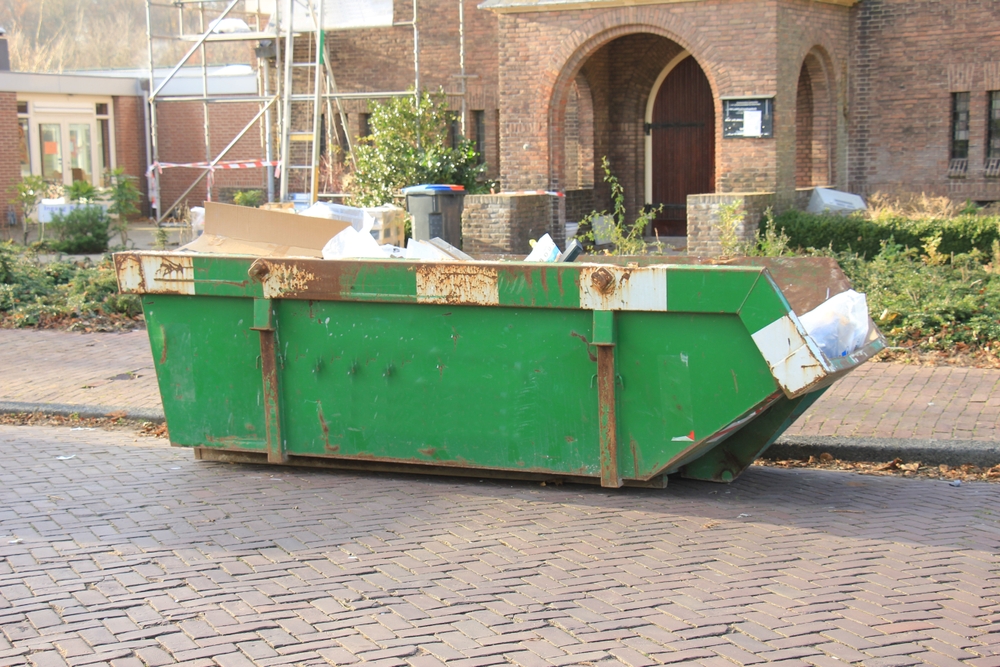June 28, 2024 - Benjamin Ehinger
Top Tips for Managing Waste During a Commercial Construction Project
CALL NOW 844-762-8449
Effective waste management is crucial for any commercial construction project. By implementing strategic approaches and integrating sustainable practices, you can significantly reduce waste and improve efficiency on your worksite. Planning a comprehensive waste management strategy early on sets the foundation for a successful project, ensuring you minimize waste generation from the outset.
Understanding the various types of construction waste allows for more targeted management and recycling efforts. It’s essential to separate materials such as concrete, wood, metal, and plastics to facilitate recycling and reuse. Collaborating with stakeholders, including suppliers and waste management companies, enhances your ability to effectively handle waste and embrace innovative solutions.
Tracking and reporting your waste management performance is key to continuously improving your processes. Utilizing tools such as ENERGY STAR Portfolio Manager helps in benchmarking and evaluating your activities. Engaging in sustainable practices not only benefits the environment but also improves your project’s overall efficiency and cost-effectiveness.
 Focusing on materials reuse and effective use of resources can significantly minimize waste during commercial construction projects. These practices promote sustainability and reduce the project’s environmental impact.
Focusing on materials reuse and effective use of resources can significantly minimize waste during commercial construction projects. These practices promote sustainability and reduce the project’s environmental impact.
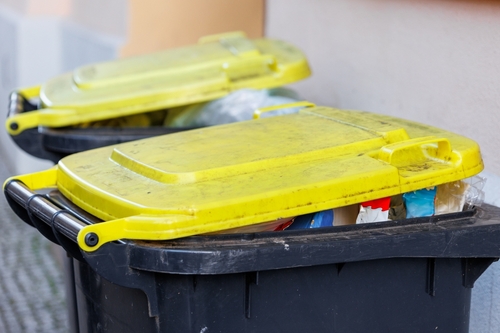 Optimizing logistics and handling not only improves efficiency at construction sites but also reduces waste and enhances productivity. Key strategies include coordinating transportation and hauling as well as designing an efficient site layout for waste management.
Optimizing logistics and handling not only improves efficiency at construction sites but also reduces waste and enhances productivity. Key strategies include coordinating transportation and hauling as well as designing an efficient site layout for waste management.
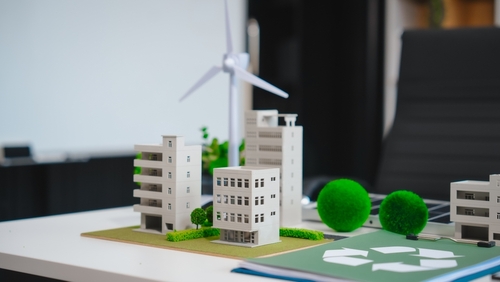 Incorporating sustainable and innovative methods into waste management during commercial construction projects not only reduces environmental impact but also promotes efficiency and cost-effectiveness. These strategies help address greenhouse gas emissions and support the transition to a circular economy.
Incorporating sustainable and innovative methods into waste management during commercial construction projects not only reduces environmental impact but also promotes efficiency and cost-effectiveness. These strategies help address greenhouse gas emissions and support the transition to a circular economy.
Key Takeaways
- Detailed planning is essential for effective waste management.
- Separate and recycle different types of construction waste.
- Utilize tracking tools to monitor and enhance waste management practices.
Planning Your Waste Management Strategy
Effective waste management during a commercial construction project requires a solid plan, clear targets for waste reduction, and a thorough understanding of waste streams and sorting methods.Developing a Comprehensive Waste Management Plan
Creating a comprehensive waste management plan is the foundation of successful construction waste management. Begin by assessing the specific needs of your project. Conduct a waste audit to determine the types and quantities of waste materials likely to be generated. Next, outline procedures for the collection, handling, and disposal of each waste type. This should include designated areas for recycling, reuse, and disposal on the construction site. Ensure your plan includes training for all workers on waste handling and recycling practices. Regularly review and update the plan to incorporate new best practices and changes in your project scope.Setting Targets for Waste Reduction
Setting clear and measurable targets for waste reduction helps to track progress and improve efficiency. Start by reviewing benchmarks set by industry standards or previous projects. Identify realistic short-term, mid-term, and long-term goals. Establish metrics to gauge your performance, such as the percentage of material diverted from landfills or the volume of recycled materials. Communicate these targets to all team members and stakeholders, ensuring everyone understands their role in achieving these goals. Consider implementing incentives for meeting or exceeding targets to foster a culture of sustainability and waste efficiency on site.Identifying Waste Streams and Sorting Methods
Understanding the different waste streams generated during construction is crucial for effective waste management. Common waste streams include concrete, wood, metals, bricks, paper, and packaging materials. Categorizing and sorting waste on site makes recycling and disposal processes more efficient. Provide clearly labeled containers or designated areas for each waste type. This reduces contamination and makes it easier to prepare waste materials for recycling or reuse. Partner with local recycling facilities and waste management companies to ensure that sorted materials are processed correctly and sustainably. Implement best practices by continually educating employees on sorting procedures and the importance of waste separation.Understanding Types of Construction Waste
Different types of construction waste require specific handling and disposal methods to ensure safety and compliance. Proper classification and management of these materials are crucial for reducing environmental impact and maintaining site safety.Classifying Construction Debris
Construction debris includes various materials generated during building activities. Most can be tossed out with a construction dumpster rental. Common types are:- Concrete and Rubble: Often from foundations and demolition processes.
- Wood and Timber: Common in framing and structural elements.
- Metal Scraps: Typically steel, aluminum, and copper.
- Drywall and Gypsum: Used in interior walls and ceilings.
- Plastics and Insulation: From packaging and insulation layers.
The Impact of Hazardous Materials
Hazardous materials in construction waste pose significant risks to health and the environment. Hazardous materials include:- Asbestos: Found in older buildings, it’s a serious health hazard.
- Lead-based Paint: Common in pre-1978 structures, requiring special handling.
- Chemical Solvents and Adhesives: Used in various construction processes.
Implementing Reduction and Reuse Practices
 Focusing on materials reuse and effective use of resources can significantly minimize waste during commercial construction projects. These practices promote sustainability and reduce the project’s environmental impact.
Focusing on materials reuse and effective use of resources can significantly minimize waste during commercial construction projects. These practices promote sustainability and reduce the project’s environmental impact.
Materials Reuse and Salvaging
Reusing materials is a crucial strategy in managing construction waste effectively. Salvaging materials from demolition sites can save natural resources and reduce the need for new materials. Items such as brick, wood, and metal can often be repurposed for other construction needs. Furthermore, collaborating with recycling centers that specialize in construction materials can ensure that reusable items are properly processed. By incorporating a material reuse and salvage plan at the project’s inception, you can significantly cut down on waste and manage resources more sustainably and efficiently.Effective Use of Resources
Effective use of resources involves careful planning and management of materials throughout the construction process. Implement practices like just-in-time delivery to minimize excess on-site materials, which reduces waste. Selecting modular and prefabricated components can also help, as these methods use materials more efficiently and generate less waste. Additionally, ensure that construction teams are trained in efficient resource management and waste reduction techniques. Using software tools to track and manage materials can further enhance efficiency. By optimizing how resources are used, you can not only reduce wastage but also lower costs and ensure a more sustainable construction process.Recycling Construction Materials
Effective recycling of construction materials like concrete, metal, plastic, wood, steel, glass, and gypsum can significantly reduce waste and promote sustainability. Here’s how you can manage this process through careful sorting and fostering partnerships with recycling facilities.Sorting and Processing Recyclables
Proper sorting of construction waste is crucial. Separate materials such as concrete, metal, plastic, wood, steel, glass, and gypsum at the construction site. This can be done using designated bins labeled for each type of material to streamline the recycling process. Invest in training for your team on the importance of material separation. This not only improves efficiency but also the quality of recyclable outputs. Specialized sorting equipment like mobile crushers for concrete and shredders for wood can aid in managing large volumes of waste. Processing involves cleaning and preparing materials for recycling. For instance, concrete can be crushed and reused as aggregate, while metals like steel and aluminum can be melted down and remade into new products. Ensuring that materials are free from contamination, such as removing nails from wood or cleaning plastics, will enhance their recyclability.Partnerships with Recycling Facilities
Establishing partnerships with specialized recycling facilities can provide significant benefits. Collaborate with facilities that accept a wide range of construction materials, including concrete, metal, plastic, wood, and glass. Recycling facilities offer resources for efficiently processing and repurposing materials. For example, they can transform gypsum from drywall into new wallboard or recycle glass into new glass products. Seek facilities that have a history of compliance with environmental regulations. Additionally, some facilities provide pickup services or bins, reducing the need for you to handle waste transport. Ensure regular communication with these facilities to stay updated on what materials they accept and any changes in their processes. This collaboration can lead to cost savings and more sustainable waste management practices for your projects.Optimizing Logistics and Handling
 Optimizing logistics and handling not only improves efficiency at construction sites but also reduces waste and enhances productivity. Key strategies include coordinating transportation and hauling as well as designing an efficient site layout for waste management.
Optimizing logistics and handling not only improves efficiency at construction sites but also reduces waste and enhances productivity. Key strategies include coordinating transportation and hauling as well as designing an efficient site layout for waste management.
Coordinating Transportation and Hauling
Effectively managing transportation and hauling is crucial for construction projects. Begin by selecting reliable haulers with a proven track record in the industry. Partnering with dependable haulers ensures timely removal and delivery of materials, reducing downtime and increasing productivity. Schedule transportation activities to avoid peak traffic times, thus minimizing delays and fuel consumption. Use GPS tracking systems to monitor vehicle locations and optimize routes, improving overall efficiency. Implementing lean principles in logistics can minimize waste. Transport only necessary materials, avoiding excess that can lead to clutter and inefficiency. Utilize RFID tagging to keep track of materials, ensuring accurate inventory management and timely replenishment.Efficient Site Layout for Waste Management
Designing an efficient site layout plays a significant role in managing waste. Plan the site in a way that segregates waste at the source. Designate specific areas for different types of waste, such as recyclable materials, hazardous waste, and general debris. Position waste containers close to the points of waste generation to reduce the time and effort required for disposal. Use color-coded containers to make waste segregation simpler and more intuitive for the workforce. Optimize space by utilizing vertical storage solutions where practical. Creating clear pathways for transportation vehicles and workers prevents bottlenecks and enhances site safety. Regularly review and adjust the layout based on the project’s phase and changing needs. By focusing on these elements, you can streamline waste management processes and significantly improve operational efficiency on construction sites.Tracking and Reporting Waste Management Performance
Effective waste management during a commercial construction project hinges on accurate tracking and reporting. By implementing robust systems, you can enhance efficiency, ensure compliance, and foster continuous improvement.Monitoring Progress and Continuous Improvement
Regularly monitoring your progress is paramount. Utilize tools like the ENERGY STAR Portfolio Manager, a free online tool, to track waste, energy, and water data over time. Establish a baseline for your waste management activities and set measurable goals. Weekly or monthly reviews help you stay on track and adjust strategies as needed. Consider digital waste tracking apps to streamline data collection and minimize errors. Engage stakeholders through regular updates and training sessions to maintain momentum and encourage best practices.Waste Reporting Requirements and Compliance
Understanding and adhering to waste reporting requirements is crucial. Regulatory bodies, including the EPA, scrutinize waste management practices to ensure compliance. Familiarize yourself with relevant regulations and certification programs like LEED, which emphasize sustainable waste management. Accurate reporting helps avoid penalties and demonstrates your commitment to environmental responsibility. Implement a standardized reporting system to compile, analyze, and submit required data. Regular audits of your waste management practices ensure ongoing compliance and highlight areas for improvement. Leveraging comprehensive waste tracking and reporting tools can significantly ease compliance efforts and enhance overall operational efficiency.Collaborating with Stakeholders
Effective communication and collaboration with stakeholders are crucial in managing waste during commercial construction projects. Engaging with local businesses and communities ensures success and sustainability.Engaging with Local Businesses and Communities
Effective engagement with local businesses and communities can significantly enhance waste management efforts. Establish relationships with local recyclers and waste management companies. This can provide valuable resources and support. Involve community members by holding informational meetings. Share project goals and waste management plans. Transparency can foster community buy-in and collaboration. Use digital platforms to keep all stakeholders informed. Regular updates via emails or social media can ensure everyone is on the same page. By maintaining open lines of communication, you can navigate potential issues early and effectively, ensuring a smooth and efficient waste management process. Collaboration is key to ensuring all parties work towards the same sustainable goals.Embracing Sustainable and Innovative Practices
 Incorporating sustainable and innovative methods into waste management during commercial construction projects not only reduces environmental impact but also promotes efficiency and cost-effectiveness. These strategies help address greenhouse gas emissions and support the transition to a circular economy.
Incorporating sustainable and innovative methods into waste management during commercial construction projects not only reduces environmental impact but also promotes efficiency and cost-effectiveness. These strategies help address greenhouse gas emissions and support the transition to a circular economy.
Adopting Green Building Techniques
Green building techniques are crucial in minimizing waste and reducing environmental impact. By using sustainable design, you can prioritize materials that are recyclable or biodegradable, which significantly reduces on-site waste. Reclaiming and reusing materials from demolished structures not only contributes to a circular economy but also reduces greenhouse gas emissions. Another effective practice involves source separation of construction waste. Properly sorted materials can be more easily recycled, which saves energy and resources. Consider setting up different bins for concrete, metals, wood, and other materials to simplify this process. Utilizing prefabricated construction elements can also minimize waste. Prefabrication is highly efficient, reducing the need for excess materials and limiting on-site waste generation. This method supports a sustainable future by optimizing resource use and reducing overall project timelines.The Role of Technology in Waste Management
Technology plays a significant role in enhancing waste management practices. Implementing smart waste solutions, such as IoT-enabled bins, helps monitor and manage waste levels efficiently. These bins can alert your team when they are full, optimizing pick-up schedules and reducing unnecessary trips. Adopting waste-to-energy technologies is another innovative approach. This process converts non-recyclable waste materials into usable energy, thereby diverting waste from landfills and generating power. Such practices align with sustainable ambitions by reducing dependency on fossil fuels. You can also leverage construction management software for better resource planning and material tracking. These tools can help in forecasting material needs accurately, minimizing over-ordering, and reducing waste. By integrating technology into your waste management strategy, you can significantly enhance the efficiency and sustainability of your construction projects. Integrating these practices in your commercial construction projects leads to a more sustainable and innovative approach, benefitting both the environment and your bottom line. For more information on sustainable practices, check out Sustainable Strategies for Handling Waste.Frequently Asked Questions
Effective management of construction waste involves various best practices, from minimizing waste generation to implementing recycling programs and ensuring regulatory compliance. Understanding these strategies can lead to both cost savings and enhanced sustainability.What are the best practices for reducing waste on a construction site?
You should start with a detailed waste management plan from project inception. Include all stakeholders and outline clear goals for waste reduction. Deconstruction, instead of full-scale demolition, allows for the recovery of valuable materials for reuse.How can construction waste management benefit cost savings and sustainability?
Efficient waste management reduces disposal costs and minimizes the amount of waste that goes to landfills. Recycling materials like concrete, metals, and wood can also provide cost recovery. Sustainable practices contribute to environmental goals and can enhance your company’s reputation.What steps can be taken to minimize construction waste during a project?
Begin with accurate project planning and scope control to avoid over-ordering materials. Utilize modular construction where possible, as it reduces offcuts and waste.What are key factors to consider in planning effective waste management for a construction project?
Ensure early involvement of all project stakeholders. Allocate sufficient resources for waste management activities, including hiring or training staff. Utilize tools like the ENERGY STAR Portfolio Manager to benchmark and track waste, energy, and water usage.In what ways can construction companies implement a successful recycling program?
Prioritize the separation and recycling of materials such as concrete, metals, wood, and plastics. Establish clear guidelines for sorting and storing recyclables on-site. Consider partnerships with recycling facilities to streamline the process.How can businesses ensure compliance with regulations when managing commercial construction waste?
Stay updated with local, state, and federal regulations regarding waste disposal and recycling. Employ a compliance officer if needed to oversee waste management practices. Implement regular training programs for staff to keep them informed about regulatory requirements and best practices.RECENT BLOGS
Our Reviews
Tyler Floyd
1719520303
Incredible customer service, very informative
Natalie Davidson
1719440638
Heather provided the best customer service that I have received in a very long time. She was knowledgeable, informative without being pushy, friendly and efficient. I really appreciated all of her help.
glenda prowell
1719242299
Louiner made it easy to make arrangements to have a dumpster put in my driveway. He was able to answer all my questions and made the entire process simple.
Glenda Lanier Prowell
1719241850
I have ordered an 11 yard dumpster to be delivered to my house.Lonier was extremely helpful and answered all my questions. The rate was very reasonable.
debbie Craton
1718740650
Heather was SUPER friendly and worked with me to get me whst I needed.I am very glad I called Waste Removal
